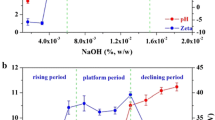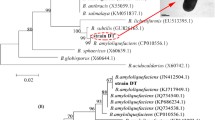Abstract
In order to realize the simultaneous removal of nine metal ions from water, in this study, an excellent flocculant suitable for the simultaneous removal of multiple metal ions in water was developed by using the excellent flocculation properties of graphene oxide (GO) combined with biological flocculants. First, this study investigated the concentrations and pollution levels of nine metal pollutants in surface water and groundwater of a typical city in central China. The maximum concentrations of these nine metal ions were Al 0.29, Ni 0.0325, Ba 0.948, Fe 1.12, As 0.05, Cd 0.01, Zn 1.45, Mn 1.24, and Hg 0.16 (in mg/L). Second, the three-dimensional structure diagram of GO was established. Gaussian16W software and the pm6D3 semi-empirical method were used to analysis the structure and the vibration of GO. The B3LYP function and basis set DEF2SVP was used to calculate the single point energy. Third, with varying the flocculation time, it was found that the maximum flocculation efficiency could reach more than 80.00% under the optimal conditions, that is, with a metal ion mixture of 20 mg/L. The optimal dosage of GO was 15 mg/L. The optimal time for bioflocculation efficiency was 2.5 h, and the optimal concentration of bioflocculant was 3 mg/L. The optimal flocculation efficiency was 82.01% under the optimal conditions.
Graphical Abstract








Similar content being viewed by others
Data availability
All data, models, and code generated or used during the study appear in the submitted article.
References
Al MD, Vinogradov J, Jackson MD (2017) Zeta potential of artificial and natural calcite in aqueous solution. Adv Coll Interface Sci 240:60–76
Azadikhah K, Davallo M, Kiarostami V, Mortazavinik S (2022) Modeling of malachite green adsorption onto novel polyurethane/srfe12o19/clinoptilolite nanocomposite using response surface methodology and biogeography-based optimization-assisted multilayer neural network. https://doi.org/10.1007/s11356-021-18249-w
Bm A, Hb A, Bi A, Lab A, Lm B (2022) Study of nickel adsorption on nacl-modified natural zeolite using response surface methodology and kinetics modeling. Groundw Sustain Dev. https://doi.org/10.1016/j.gsd.2022.100757
Chai LY, Li QZ, Yan X, Wang QW, Min XB, Yang ZH (2012) A method for semi-quantitative evaluation of sludge settling performance of heavy metal wastewater based on zeta potential. CN102608006A
Chen XD, Wang DF, Wang S et al (2021) Synthesis and dewatering properties of cellulose derivative-grafting DMC amphoteric biodegradable flocculants. J Polym Environ 2(9):565–575
Ching LW, Keesan FWM, Muhamad II (2022) Optimization of ZnO/GO nanocomposite-loaded polylactic acid active films using response surface methodology. J King Saud Univ - Sci 34(3)
Feng LJ, Wang WY, Feng RQ et al (2015) Coagulation performance and membrane fouling of different aluminum species during bioflocculation/ultrafiltration combined process. Chem Eng J 262:1161–1167
Gutiérrez R, Passos F, Ferrer I et al (2015) Harvesting microalgae from wastewater treatment systems with natural flocculants: effect on biomass settling and biogas production. Algal Res 9:204–211
Hao W, Li YP, Zhou S et al (2017) Surface characteristics of microalgae and their effects on harvesting performance by air flotation. Int J Agric Biol Eng 10(1):125–133
Kasirajan R, Bekele A, Girma E (2022) Adsorption of lead (Pb-ii) using CaO-NPs synthesized by solgel process from hen eggshell: response surface methodology for modeling, optimization and kinetic studies. South African J Chem Eng. https://doi.org/10.1016/j.sajce.2022.03.008
Lei X, Chen Y, Shao Z et al (2015) Effective harvesting of the microalgae Chlorella vulgaris via flocculation-flotation with bioflocculant. Biores Technol 198:922–925
Li X, Lu Z, Chuah S (2017) Effects of graphene oxide aggregates on hydration degree, sorptivity, and tensile splitting strength of cement paste. Compos Part A-Appl S 100:1–8
Liang X, Mo Z, Han YJU et al (2018) Enterobacter aerogenes metabolites enhance microcystis aeruginosa biomass recovery for sustainable bioflocculant and biohydrogen production. Sci Total Environ. https://doi.org/10.1016/j.scitotenv.2018.03.327
Liu CJ, Huang XC, Wu YY, Deng XW, Zheng ZL, Xu Z et al (2021) Advance on the dispersion treatment of graphene oxide and the graphene oxide modified cement-based materials. Nanotechnol Rev 10(1):34–49
Liu L, Wang Q, Lin J, Owens G, Chen Z (2022) Enhanced 17α-estradiol removal by biosynthesized rGO@Fe NPs using a response surface methodology
Lu T, Chen F (2012) Quantitative analysis of molecular surface based on improved marching tetrahedra algorithm. J Mol Graphics Model 38(Complete):314–323
Lyu YN, Yu Y, Huang AP et al (2019) Accumulation characteristics and risk assessment of heavy metals in surface sediment from Raohe River estuary. Environ Sci Technol 42(11):178–186
Na Y, Chao L, J Yu, Q Xu, S Wei, Z Tian et al (2019) Insight into adsorption of combined antibiotic-heavy metal contaminants on graphene oxide in water - sciencedirect. Sep Purif Technol 236
Niu Z, Li Y (2013) Removal and utilization of capping agents in nanocatalysis. Chem Mater 26(1):72–83
Rafal S, Edyta et al (2013) Adsorption of divalent metal ions from aqueous solutions using graphene oxide. Dalton transactions (Cambridge, England 42(16):5682–9
Roberta R, Stefania C, Danilo V et al (2016) Biosilica from diatoms microalgae: smart materials from bio-medicine to photonics. J Mater Res 32(2):279–291
Rogora M, Steingruber S, Marchetto A, Mosello R, Giacomotti P, Orru' A et al (2022) Response of atmospheric deposition and surface water chemistry to the COVID-19 lockdown in an alpine area
Sam G, Philippe D, Skipper NT, Bai Y (2018) Understanding the behavior of graphene oxide in Portland cement paste. Cem Concr Res 111:169–182
Sellami S, Zeghouan O, Dhahri F, Mechi L, Moussaoui Y, Kebabi B (2022) Assessment of heavy metal pollution in urban and peri-urban soil of Setif city (High Plains, Eastern Algeria). Environ Monit Assess 194(2):1–17
Song W, Du J, Sun T et al (2010) Gold nanoparticles capped with polyethyleneimine for enhanced siRNA delivery. Small 6(2):239–246
Tian WB, Xu FN, Jun L, Zhi QS (2019) Mechanism of Janus polymerization: a DFT study Fig.S3 energy profiles of anionic polymerization in stage I under B3LYP/6–31G(d,p)(blue) and B3LYP/AUG-cc-p VTZ//B3LYP/6–31G(d,p)(red). Scheme S1. Propagation process of CL/THF on cationic side in Stage I of J. Chinese J Polym Sci (10):990–994 + 1–2
Tsuneda T, Taketsugu T (2021) Reply to the 'comment on "theoretical investigations on hydrogen peroxide decomposition in aquo"' by w. h. koppenol, phys. Chem Chem Phys 23
Vandamme D, Foubert I, Muylaert K (2013) Flocculation as a low-cost method for harvesting microalgae for bulk biomass production. Trends Biotechnol 31(4):233
Zeng F, Xu L, Sun C, Liu H, Chen L (2020) A novel bioflocculant from Raoultella planticola enhances removal of copper ions from water. J Sens 1–10
Zhang GL, Guo XY, Li XW, Qin GQ, Fu H (2015) Energy band-gap calculation of d-Ta2O5 using SX-LDA and B3LYP methods. J Wuhan Univ Technol (Materials Science Edition) (01) 43–46
Zhao YX, Gao BY, Wang Y et al (2012) Coagulation performance and floc characteristics with polyaluminum chloride using sodium alginate as coagulant aid: a preliminary assessment. Chem Eng J 183:387–394
Acknowledgements
This work was supported by the National Natural Science Foundation of China (No. 51708248), the China Scholarship Council (No. 201808220182), the Jilin Science and Technology Development Plan Project (20200403019SF), and the Program of Science and Technology of the Jilin Institute of Chemical Technology (No. 2021044) and Jilin Science and Technology Bureau (20230103022). I also want to thank the China Scholarship Council for their support.
Author information
Authors and Affiliations
Contributions
Liang Xu: investigation, writing article, and provide funding. Feng Zhang: investigation, data curation, and visualization. Yu Xia: data curation and visualization. Zhipeng Zhang: investigation. Mengyuan An: investigation. Chunlei Xu: investigation. Dazhi Sun: supervision, writing—review and editing, and provide funding. Caiyun Sun: supervision and writing—review and editing.
Corresponding author
Ethics declarations
Ethical approval
Ethics Committee approval was obtained from the Institutional Ethics Committee of Jilin Institute of Chemical Technology to the commencement of the study.
Consent to participate
This article does not involve copyright disputes between authors.
Consent for publication
The authors of this article agree with the publication of this paper and agree with the ranking of the authors.
Conflict of interest
The authors declare no competing interests.
Additional information
Responsible Editor: Angeles Blanco
Publisher's note
Springer Nature remains neutral with regard to jurisdictional claims in published maps and institutional affiliations.
Highlights
• Gaussian16W software used pm6D3 semi-empirical method to optimize the structure and analyze the vibration of the initial conformation of GO.
• The B3LYP function basis group DEF2SVP was used to calculate the single point energy of GO.
• The highly effective biological flocculants MBF-57 is combined with GO to remove heavy metals.
• Factors affecting the removal of heavy metals by GO combined with MBF-57 were optimized.
Supplementary Information
Below is the link to the electronic supplementary material.
Rights and permissions
Springer Nature or its licensor (e.g. a society or other partner) holds exclusive rights to this article under a publishing agreement with the author(s) or other rightsholder(s); author self-archiving of the accepted manuscript version of this article is solely governed by the terms of such publishing agreement and applicable law.
About this article
Cite this article
Xu, L., Zhang, F., Xia, Y. et al. Study on the flocculation mechanism of a bioflocculant from Acinetobacter sp. TH40 combined with graphene oxide for the removal of metal ions from water. Environ Sci Pollut Res 30, 79835–79845 (2023). https://doi.org/10.1007/s11356-023-28018-6
Received:
Accepted:
Published:
Issue Date:
DOI: https://doi.org/10.1007/s11356-023-28018-6




